
Master lush scale canvases of Veronese decorated for his work many secular and religious buildings of Venice. “The Feast in the House of Levi” was written for the refectory of the Dominican convent of St. Giovanni and Paolo. The researchers suggest that the original painting was created on a different plot. There are different points of view on what is “The Last Supper”, as the place used to be a product of “The Last Supper” by Titian, who died in the fire, “Feast in the house of Simon,” or some other feast.
At the end of the Veronese he was summoned for questioning by the holy inquisition for overly free interpretation of the Gospel scenes, inappropriate characters and extra parts that do not meet the strict policy of the Catholic Church related to the Counter-Reformation. After his master gave three months to rewrite the web, but instead he just renamed it “The Feast in the House of Levi” is not as sacred gospel scene.
Veronese is known for its crowded paintings depicting biblical feasts and meals. This composition represents the quintessence of his research in this direction. Inscribed in the classical architectural decoration in the form of a triumphal arch, inspired by the classical works popular at the time, Andrea Palladio and Jacopo Sansovino, it is as if the viewer opens the theatrical performance, played out against the backdrop of painted backdrop.
A rich palette of bright colors, “describes” a motley crowd of characters, among them – the Turks, blacks, guards, nobles, jesters, and dogs. In the center of the canvas – a figure of Christ, this in contrast to the rest against the sky, it is his pale pink tunic stands out among the participants feast. From the artist does not escape any detail! Judas, he not only placed on the other side of the table from the Master, but also forced to turn away. His attention was distracted servant, pointing to the dog, who was watching a cat playing with a bone under the table.
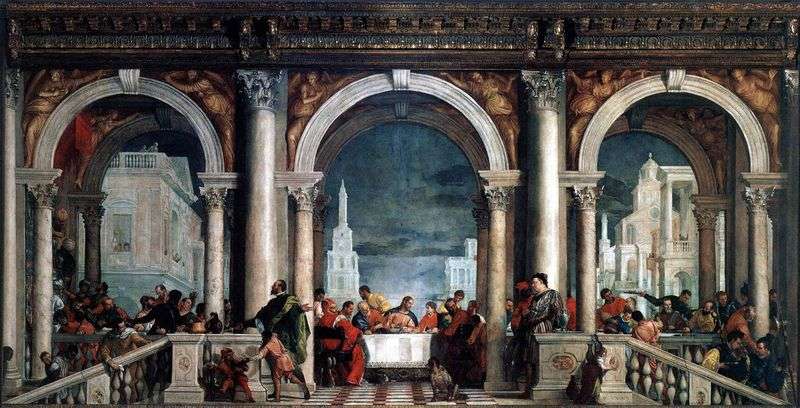 A feast in the house of Levi by Paolo Veronese
A feast in the house of Levi by Paolo Veronese Dinner at Emmaus by Paolo Veronese
Dinner at Emmaus by Paolo Veronese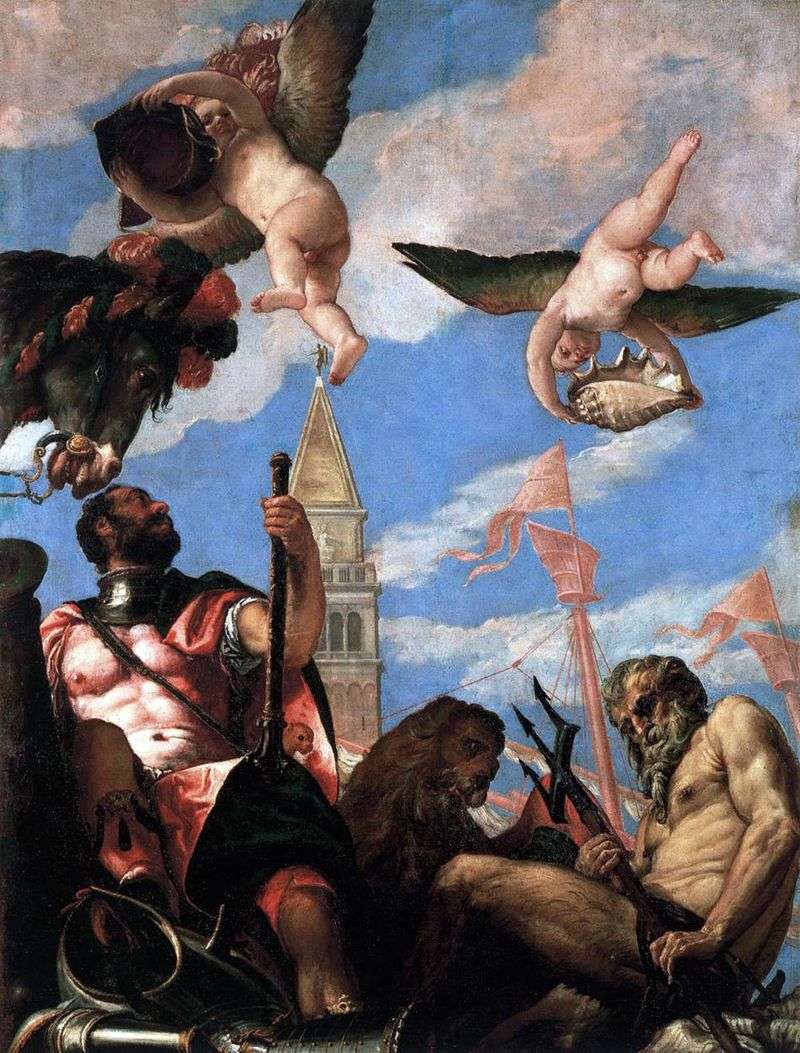 Mars and Neptune by Paolo Veronese
Mars and Neptune by Paolo Veronese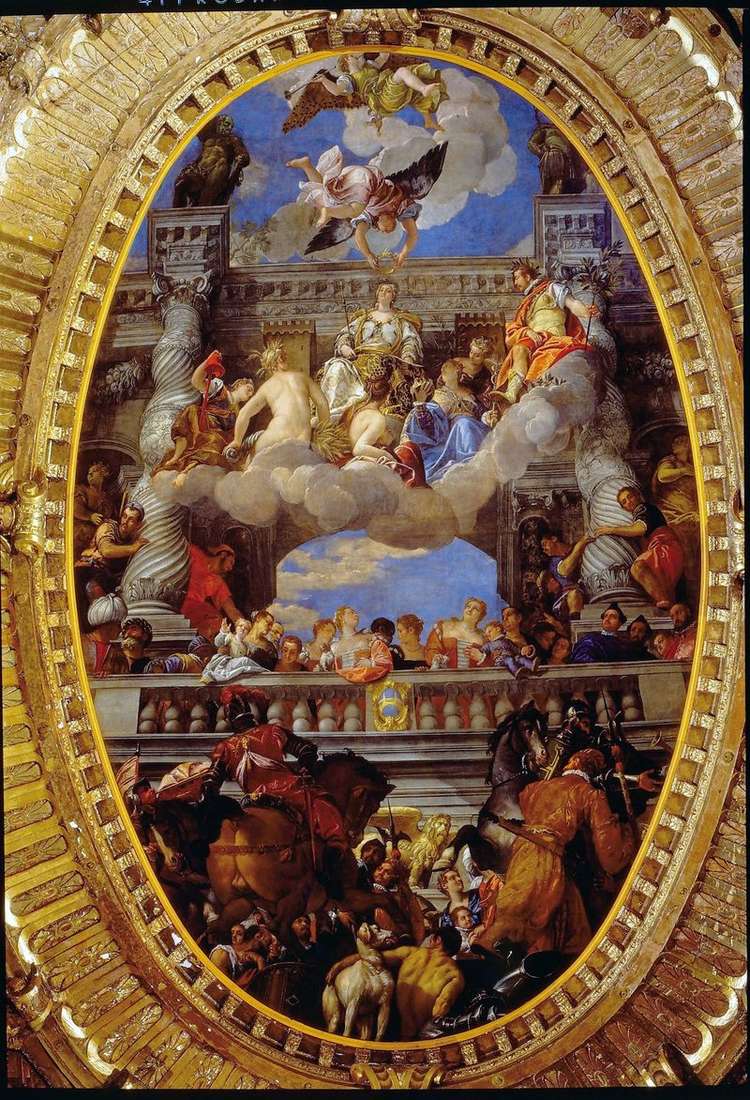 The Triumph of Venice by Paolo Veronese
The Triumph of Venice by Paolo Veronese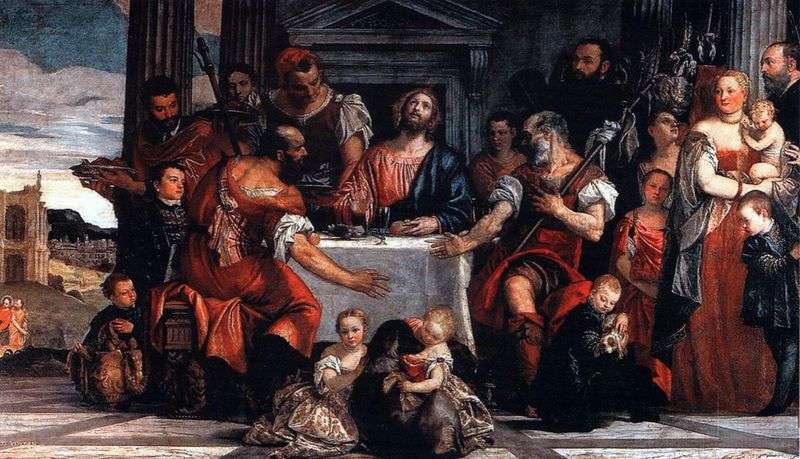 Christ in Emmaus by Paolo Veronese
Christ in Emmaus by Paolo Veronese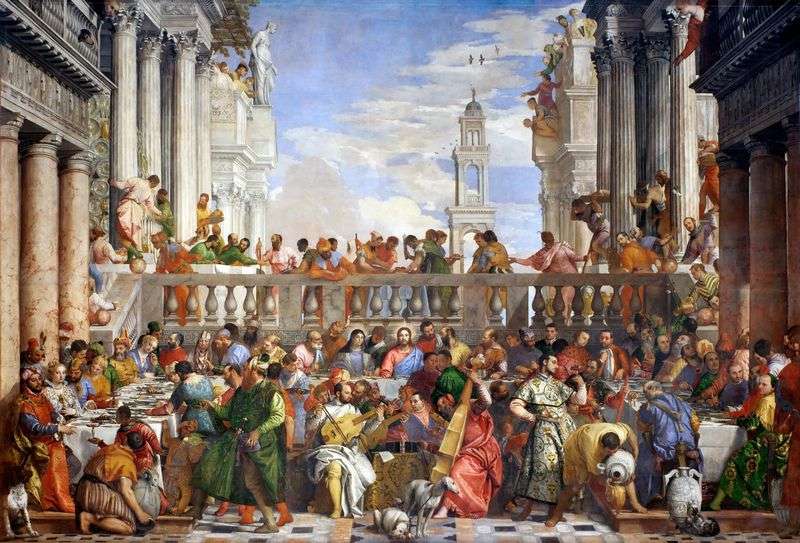 Wedding in Cana by Paolo Veronese
Wedding in Cana by Paolo Veronese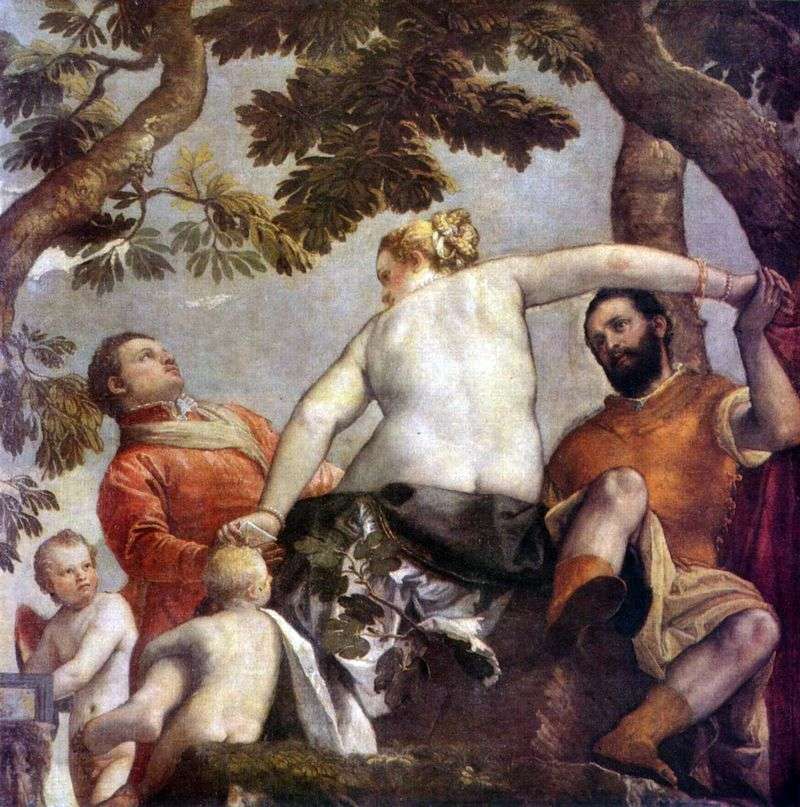 Treason by Paolo Veronese
Treason by Paolo Veronese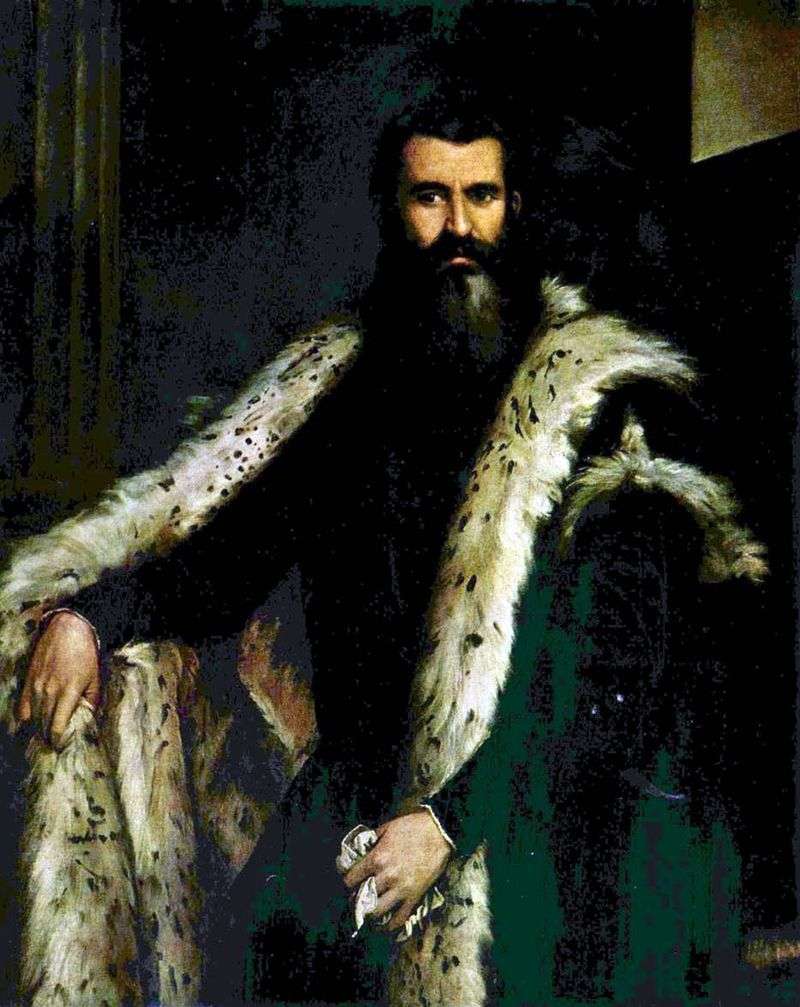 Portrait of Daniela Barbaro by Paolo Veronese
Portrait of Daniela Barbaro by Paolo Veronese